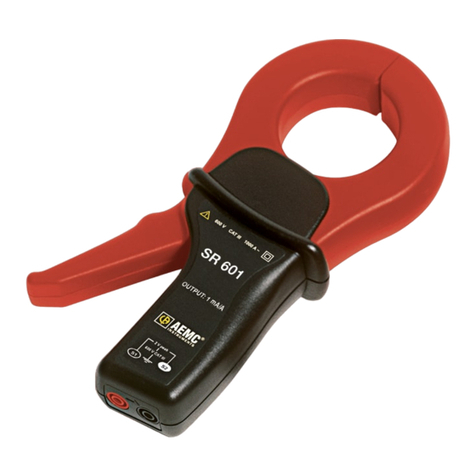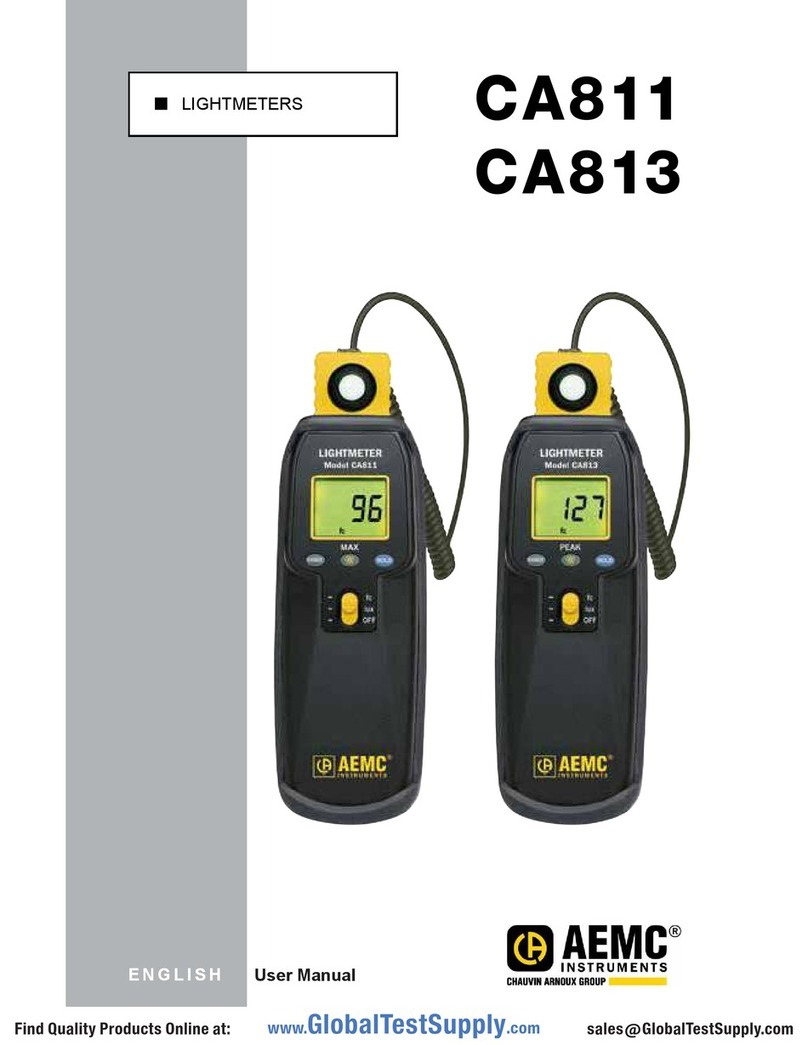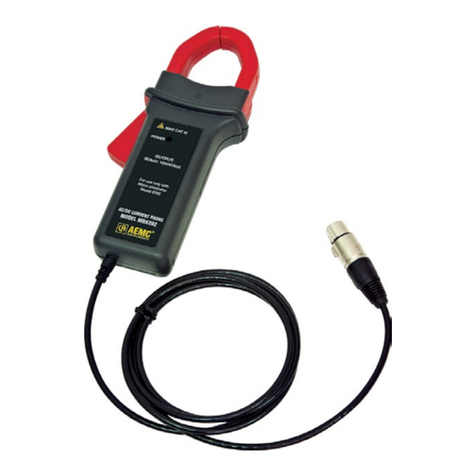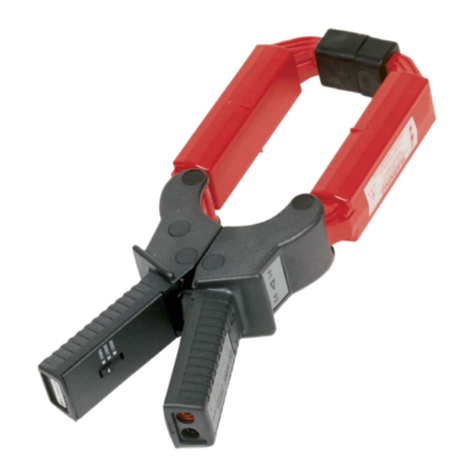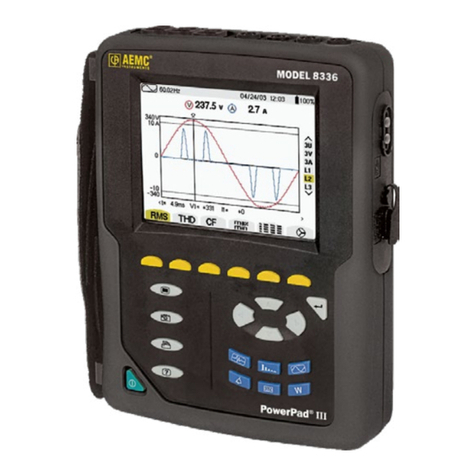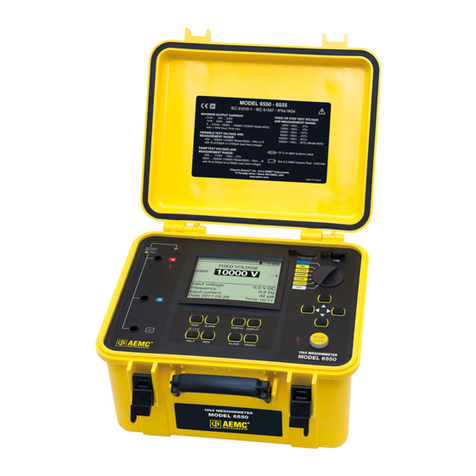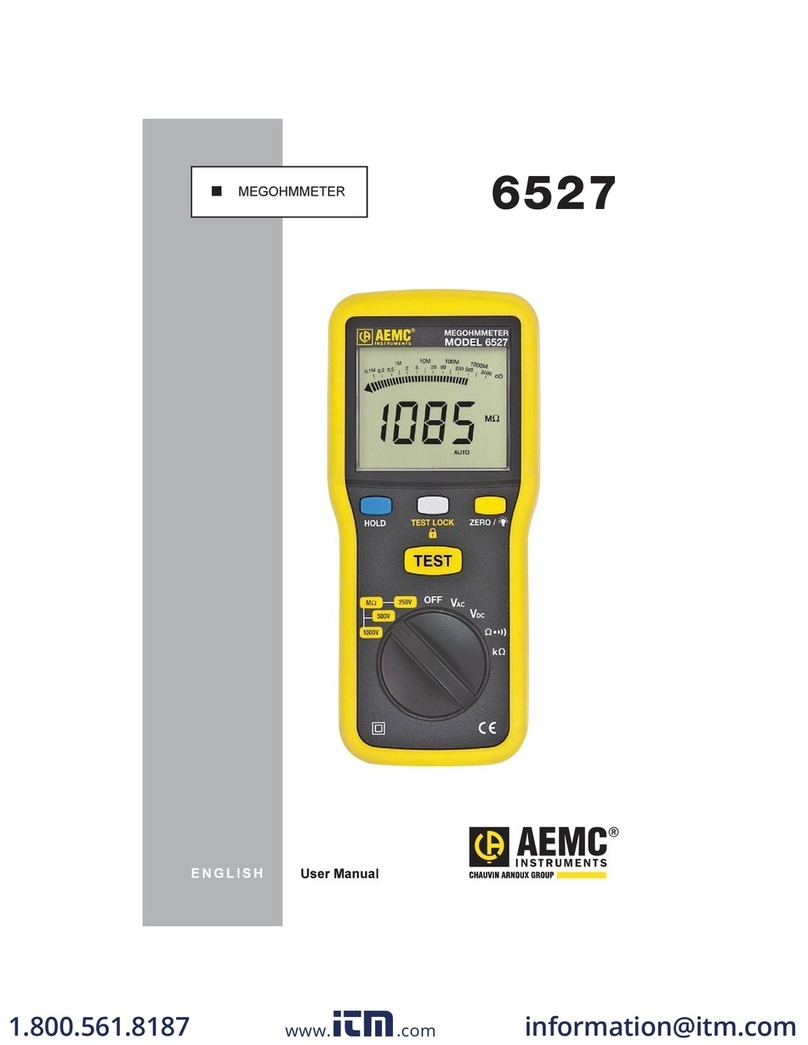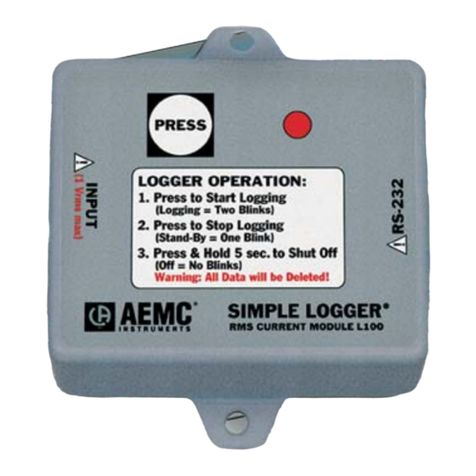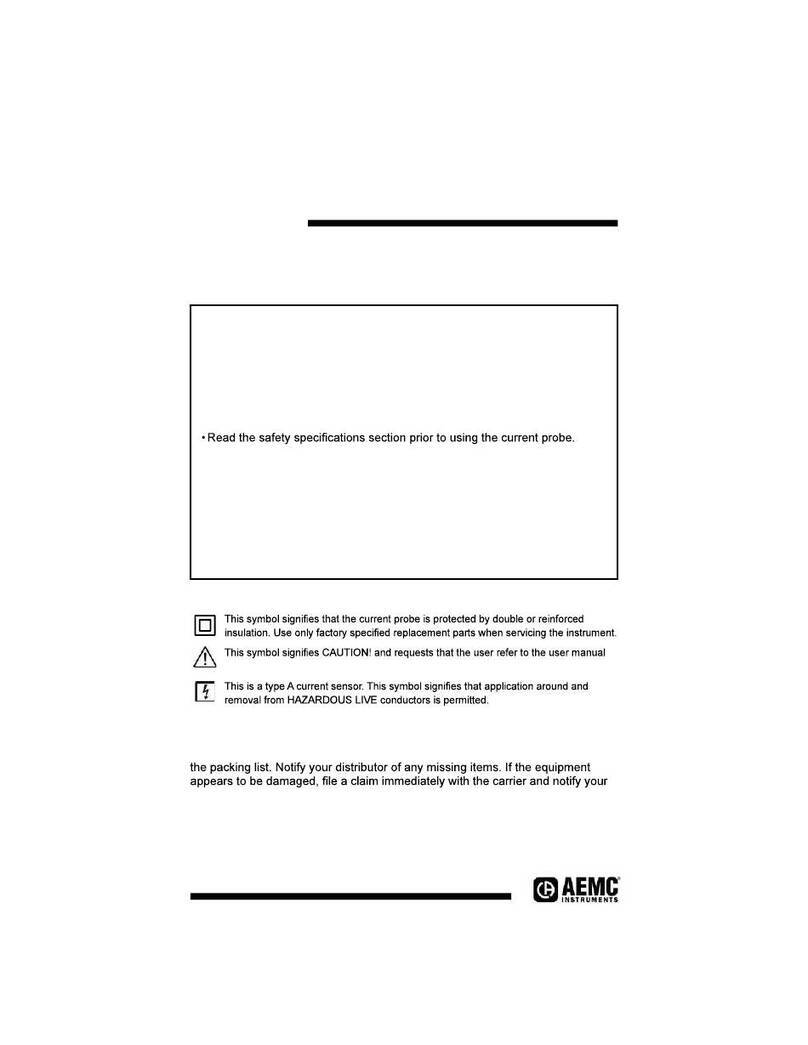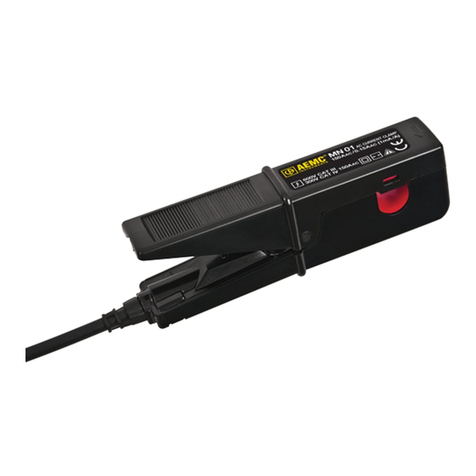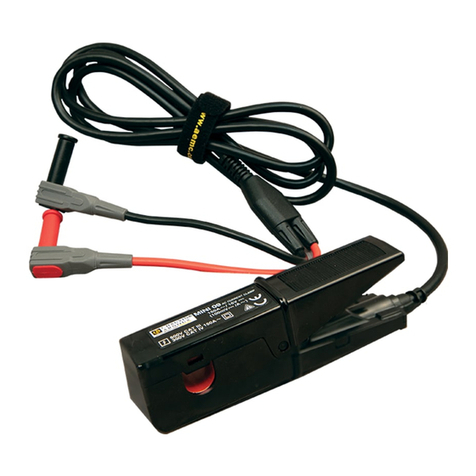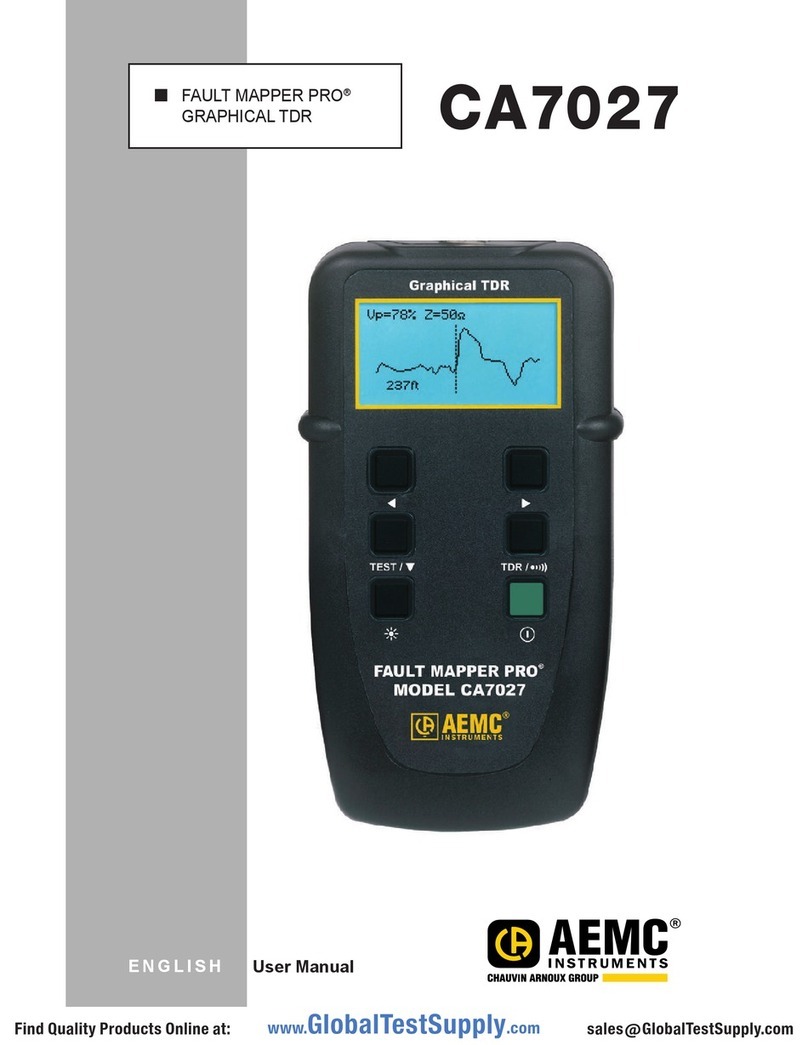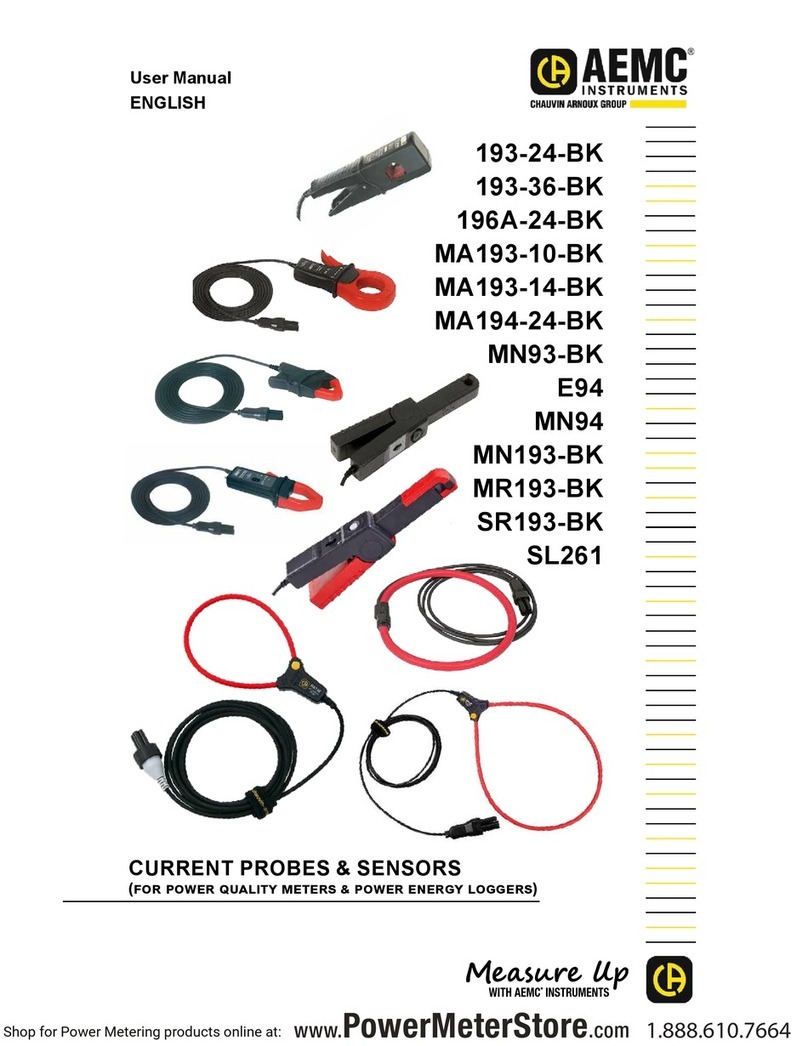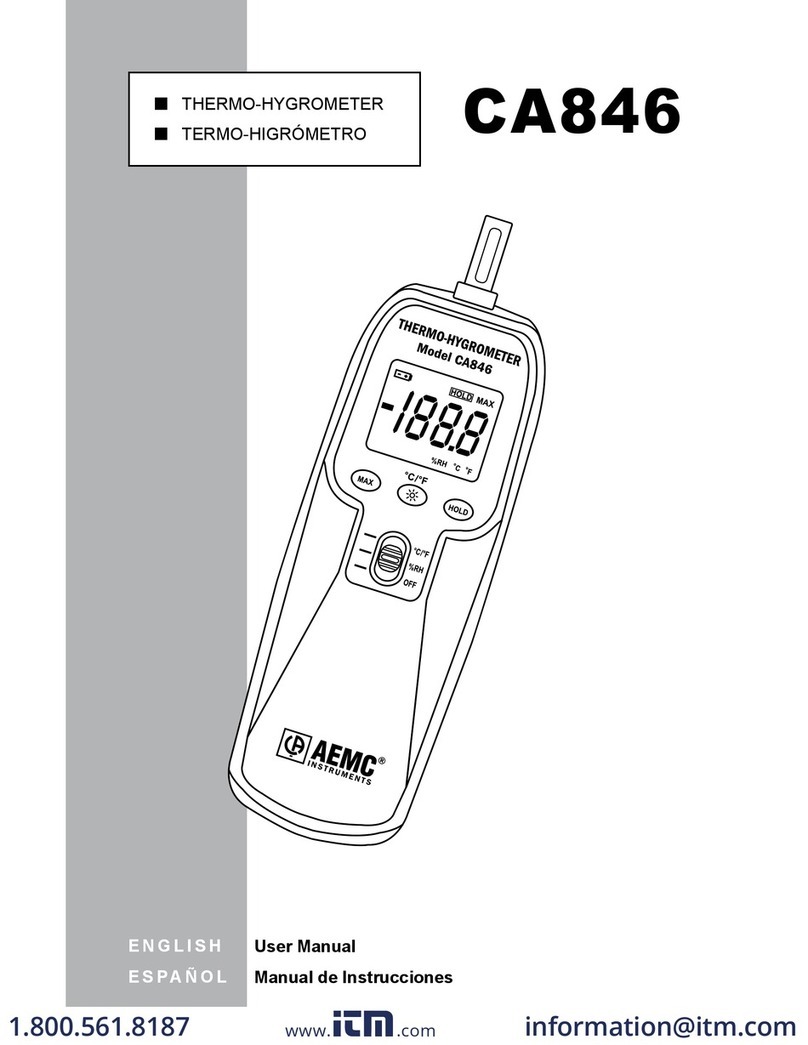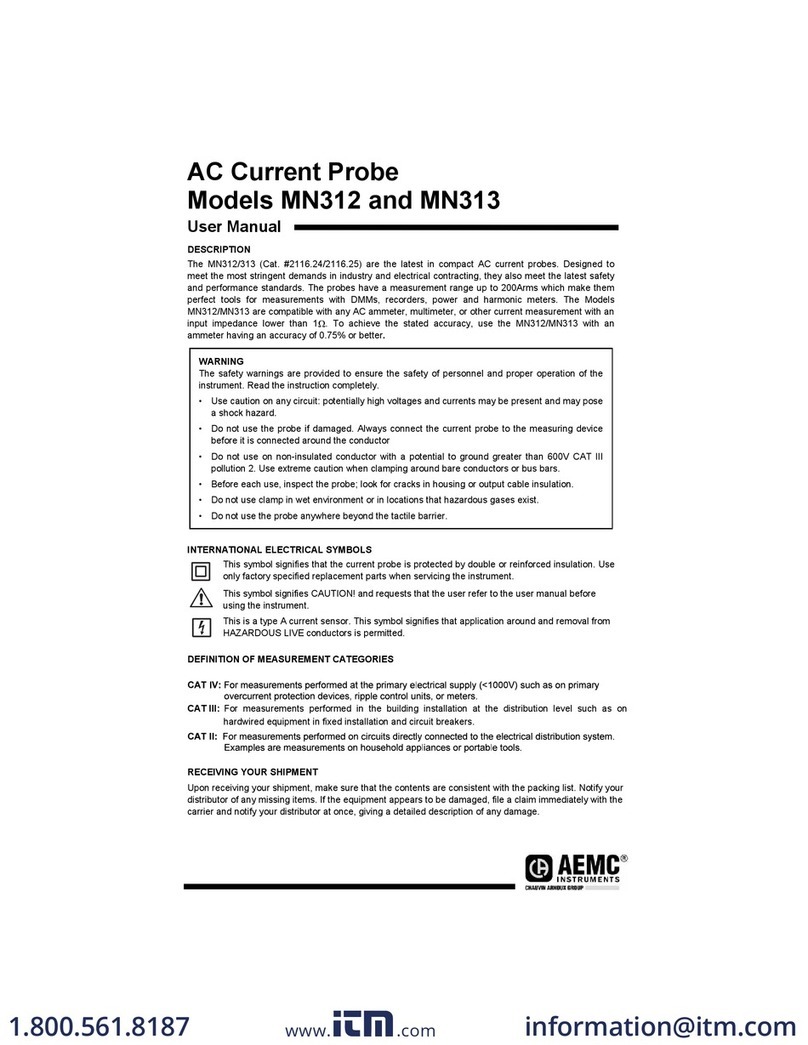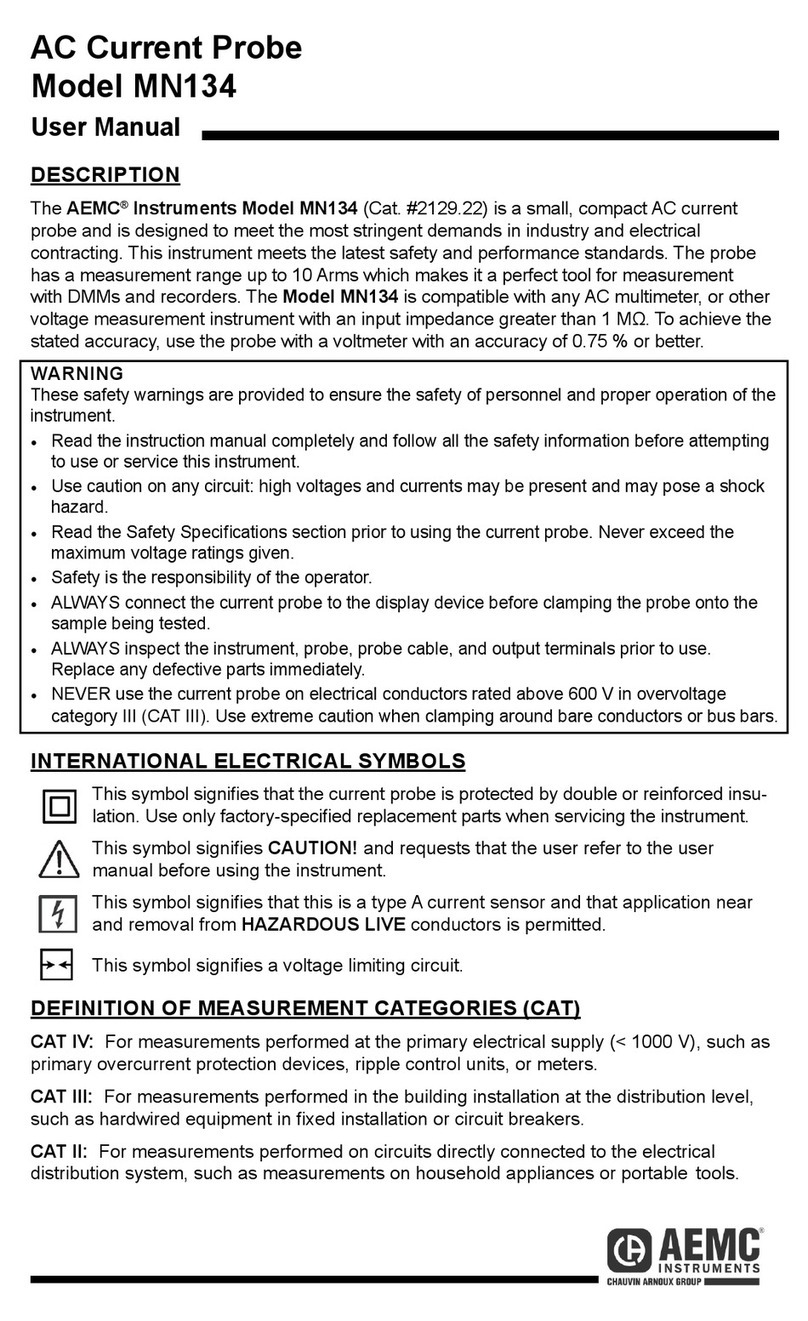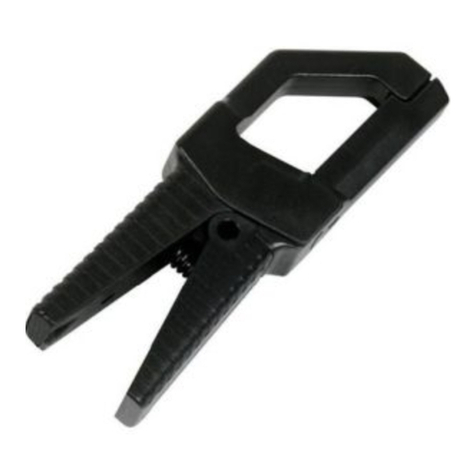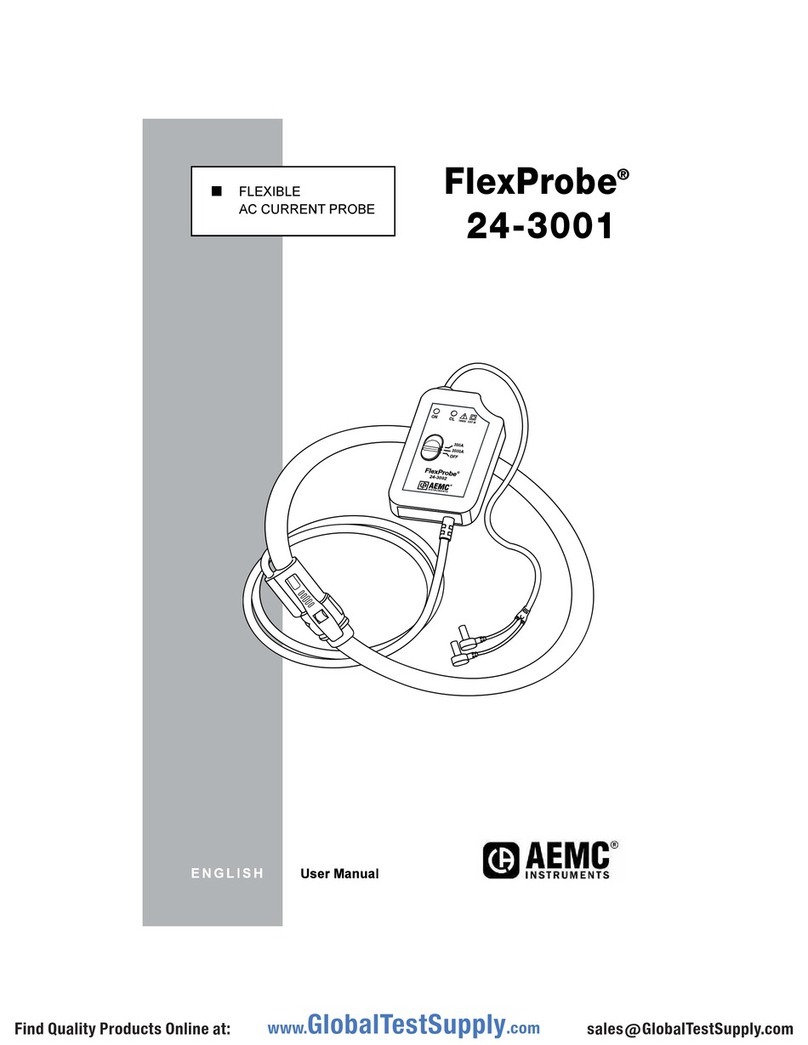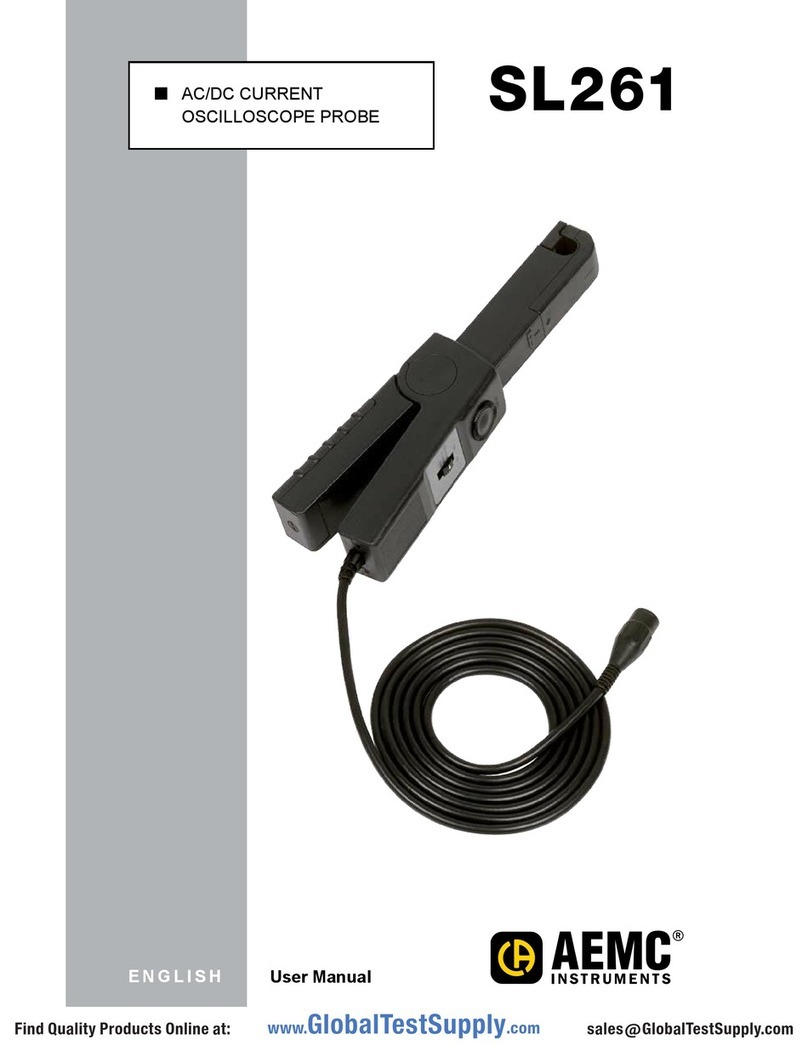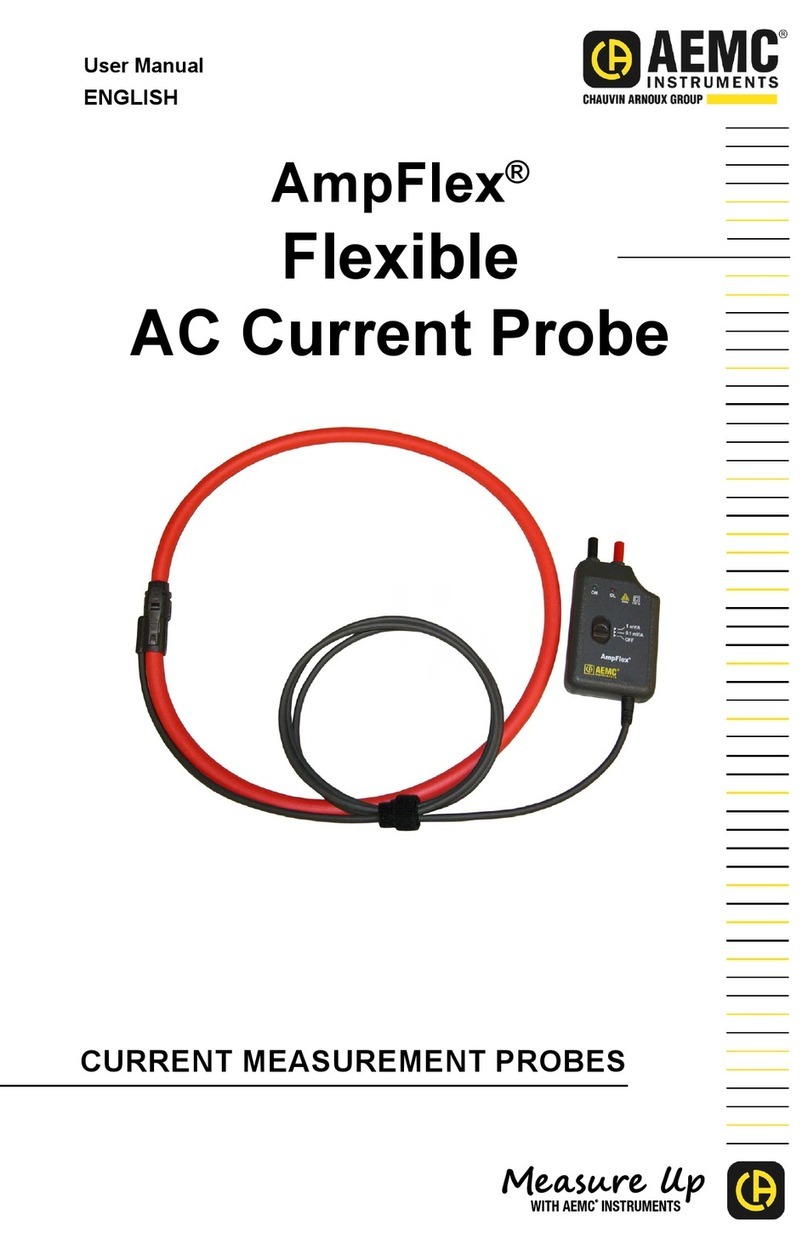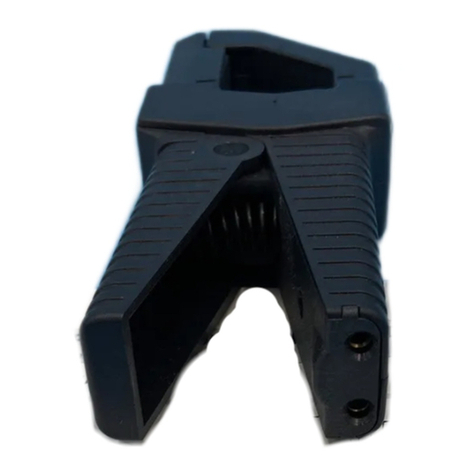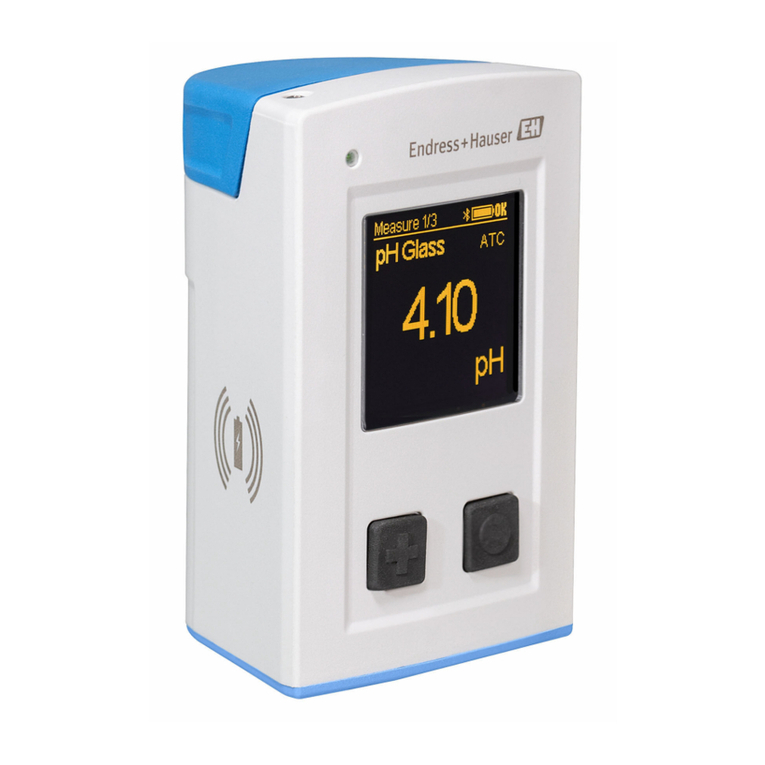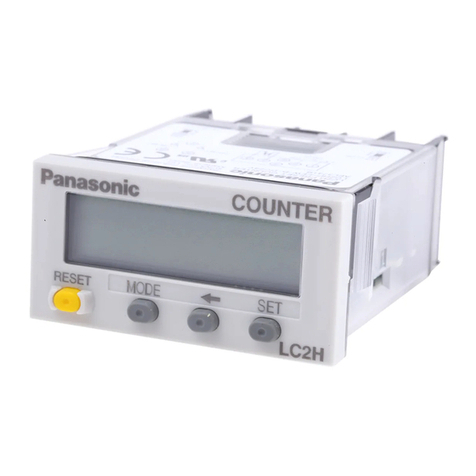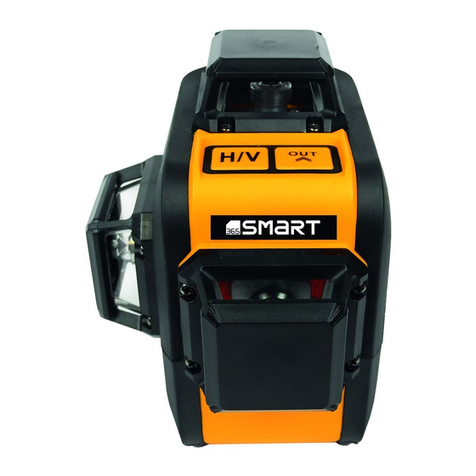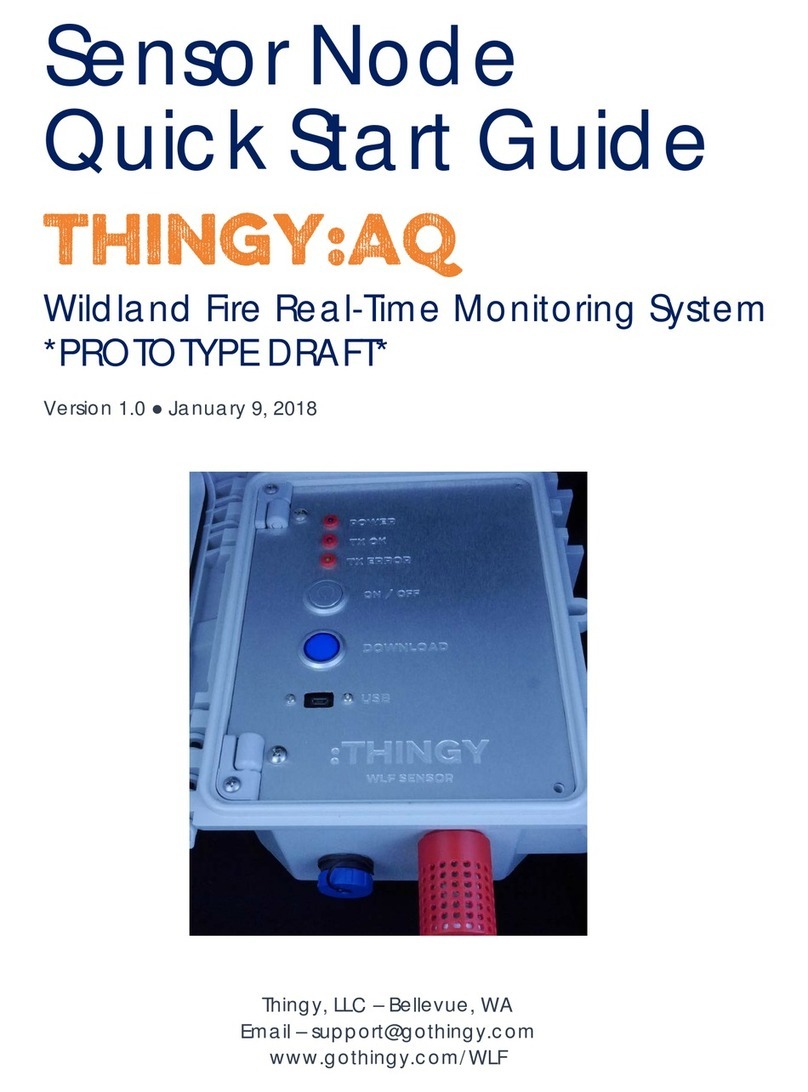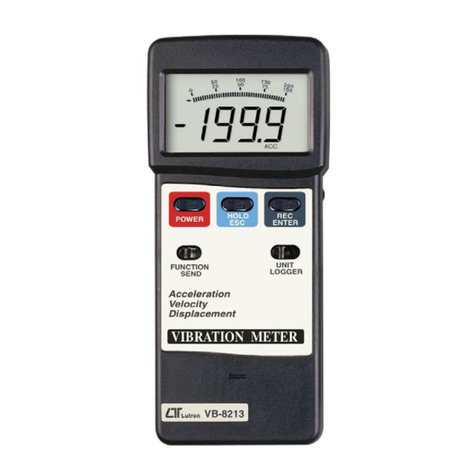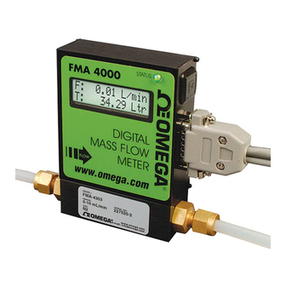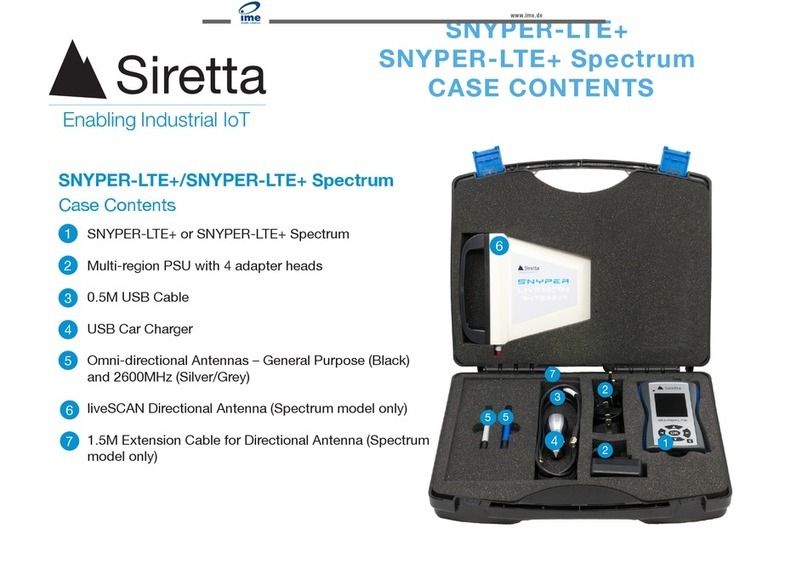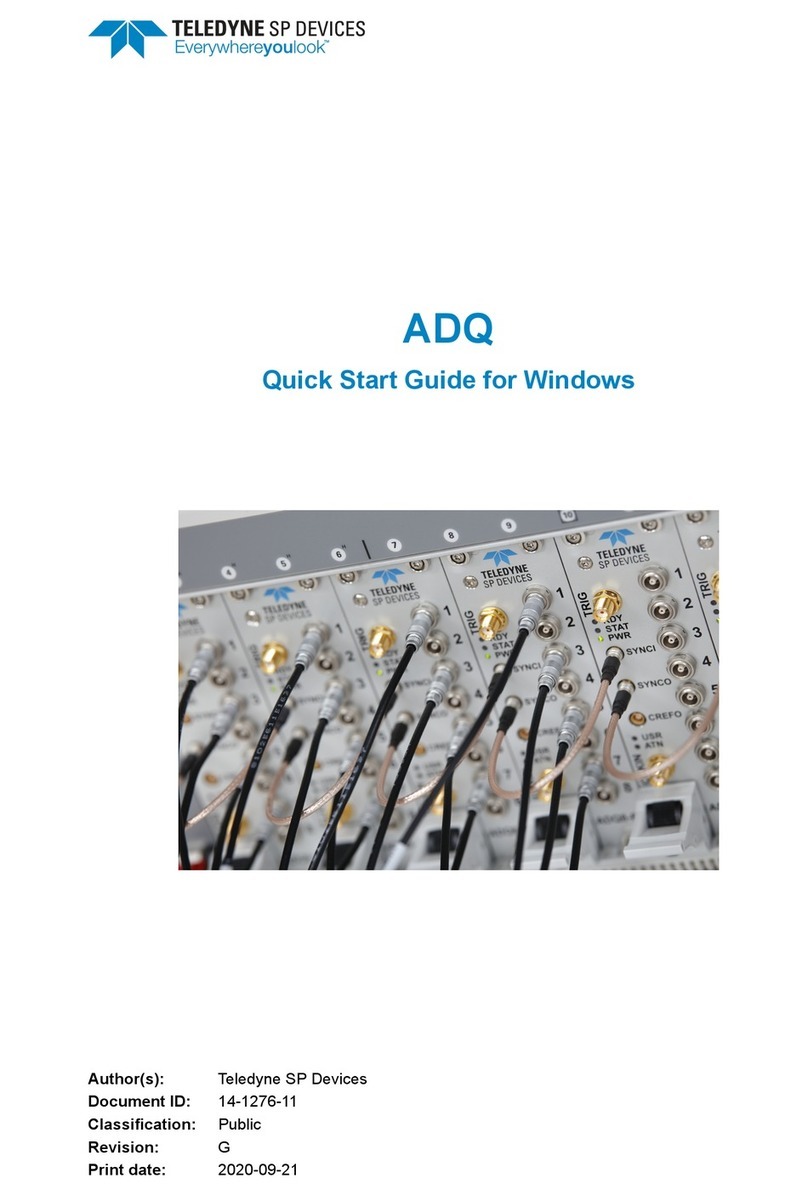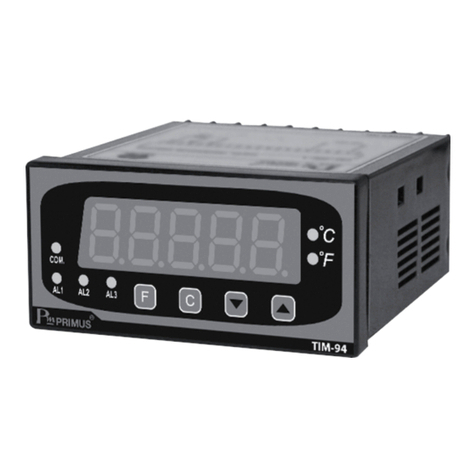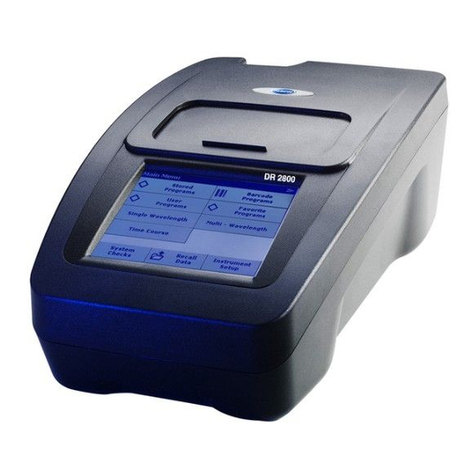
Inuence of Adjacent Conductor:
< 2 mA/A at 50 Hz
Inuence of Conductor Position in Jaw:
< 0.1 % of mA output at 50/60 Hz
Inuence of Frequency:
< 2 % of mA output from (65 to 500) Hz
Inuence of Temperature: ≤ 0.2 % per 10 °K
Inuence of Humidity (10 to 90% RH):
≤ 0.1 % of mA
MECHANICAL SPECIFICATIONS
Operating Temperature:
(14 to 122) °F (-10 to +50) °C
Storage Temperature:
(-40 to 176) °F (-40 to +80)°C
Maximum Cable Diameter:
One Ø 0.39 in (10 mm)
Case Protection: IP 40 (IEC 529)
Drop Test:
Test per IEC 68-2-32:
1.0 m drop on 38 mm of Oak on concrete
Mechanical Shock: Test per IEC 68-2-27
Vibration: Test per IEC 68-2-6
Dimensions:
(4.43 x 1.48 x 1.02) in (112.5 x 37.5 x 26) mm
Weight: 180 g (6.5 oz)
Polycarbonate Material:
Jaws: Red Polycarbonate
Case: Dark Polycarbonate
Opening Operations - Life: > 50,000
Output:
Double/reinforced insulated 5 ft (1.5 m) lead
with safety 4 mm banana plug
Altitude: < 2000 m
Indoor use only
SAFETY SPECIFICATIONS
Electrical:
Conforms to IEC 1010-2-32. ed. 2 2003
Common Mode Voltage:
300 V CAT IV, 600 V CAT III,
Pollution Degree 2
Electromagnetic Compatibility:
EN61326-1 (ed. 97)+A1 (ed. 98):
transmission and immunity in an industrial
site
ORDERING INFORMATION
AC Current Probe MN02...... Cat. #2129.20
Accessories:
Banana plug adapter
(to non-recessed plug)........... Cat. #1017.45
OPERATION
Please make sure that you have already read and fully understand the WARNING section
on page 1.
Making Measurements with the AC Current Probe Model MN02
• Connect the black lead of the current probe to “common” and the red lead to the
AC current input on your DMM or other current measuring instrument. Select the
appropriate current range (400 mAAC range). Clamp the probe around the conductor
to be tested. If the reading is less than 400 mA, select the lower range until you obtain
the best resolution. Read the value display on the DMM and multiply it by the probe
ratio (1000/1). If the reading = 0.098 A, the current owing through the probe is
0.098 A x 1000 = 98 AAC.
• For best accuracy, avoid taking measurements in the proximity of other conductors if
possible. The other conductors may create noise that will aect the accuracy of the
measurement.
Tips for Making Precise Measurements
• When using a current probe with a meter, it is important to select the range that
provides the best resolution. Failure to do this may result in measurement errors.
• Make sure that probe jaw mating surfaces are free of dust and contamination. It is
critical for power measurement. Contaminants cause air gaps between the jaws,
which increases the phase shift between primary and secondary.
